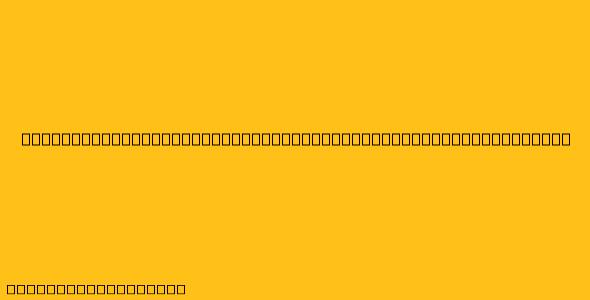Formal and Informal Letter Examples in English
Letters are a common form of communication used in various situations. Knowing the difference between formal and informal letters is crucial for writing effective and appropriate messages. Here are some examples of formal and informal letters:
Formal Letter
Formal letters are used for professional and official communication. They are typically written to someone you don't know well or in a professional context.
Here's an example of a formal letter requesting information:
[Your Name]
[Your Address]
[Your Phone Number]
[Your Email Address]
[Date]
[Recipient Name]
[Recipient Title]
[Recipient Company/Organization]
[Recipient Address]
Dear [Recipient Name],
I am writing to request information regarding [topic of inquiry]. I am [briefly state your reason for needing the information].
I would be grateful if you could provide me with [specific information you need].
Thank you for your time and consideration.
Sincerely,
[Your Name]
Key features of a formal letter:
- Formal greeting and closing: Use "Dear [Recipient Name]" and "Sincerely" or "Yours faithfully".
- Formal tone and language: Avoid slang, contractions, and informal language.
- Professional layout: Use a clear and organized structure with proper indentation and spacing.
- Proofreading: Ensure the letter is free of grammatical and spelling errors.
Informal Letter
Informal letters are used for personal communication with friends, family, or close acquaintances. They are more casual and allow for a more conversational tone.
Here's an example of an informal letter to a friend:
[Your Name]
[Date]
Dear [Friend's Name],
How are you doing? I hope you're having a great week.
I'm writing to tell you about [briefly share your news].
[Continue writing about your news, sharing personal details, and asking questions.]
I'd love to hear about what's been going on with you too. Let me know how things are going!
Talk soon,
[Your Name]
Key features of an informal letter:
- Casual greeting and closing: Use "Hi [Friend's Name]", "Best" or "Love" for the closing.
- Conversational tone: Use slang, contractions, and informal language.
- Free-flowing style: Don't worry about being overly formal or structured.
- Personal details: Feel free to share personal anecdotes and stories.
Conclusion
Understanding the differences between formal and informal letters is essential for effective communication. By following the guidelines above, you can write clear and appropriate letters for different situations. Remember to tailor your writing style to your audience and the context of the letter.
